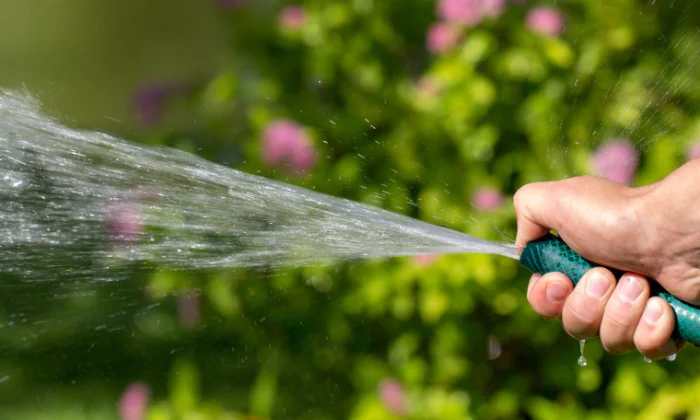As the vibrant greens of summer transition into the warm hues of fall, lawn care practices must adapt to the changing seasons. Among these adjustments, one crucial question arises for homeowners across regions: When should I stop watering my lawn? At Robert Complete Care, we understand the importance of tailored lawn maintenance, especially during the transition from summer to fall. In this comprehensive guide, we’ll delve into the specifics of when to cease watering your lawn, considering both the general fall season and the unique conditions of Texas landscapes.
Understanding Fall Lawn Care
Fall heralds a shift in environmental conditions, characterized by cooler temperatures, shorter days, and decreased evaporation rates. These changes signal a reduced need for watering as lawns enter dormancy. However, it’s essential to strike a balance between providing adequate moisture and avoiding overwatering, which can lead to issues like fungal diseases and root rot. Robert Complete Care also provide Lawn Care services.
When to Stop Watering in the Fall
In most regions, including Texas, the general rule of thumb is to reduce watering frequency as autumn progresses gradually. As temperatures cool and rainfall increases, lawns naturally require less supplemental irrigation. To determine the optimal watering schedule, consider factors such as soil type, grass species, and local climate patterns.
For cool-season grasses commonly found in northern regions, such as Kentucky bluegrass and tall fescue, begin scaling back watering in early to mid-fall as temperatures moderate. Aim to maintain soil moisture levels sufficient to support root health without promoting excessive growth.
In Texas, where warm-season grasses like Bermuda grass, Zoysia grass, and St. Augustine grass predominate, the approach to fall lawn care differs slightly. Due to the state’s diverse climate zones, ranging from humid subtropical to arid desert, the timing of when to stop watering varies. However, a general guideline is to taper off irrigation in late fall as temperatures cool and rainfall becomes more abundant.
Factors Influencing Watering Cessation in Texas
Climate Zones:
Texas encompasses several distinct climate regions, each with its precipitation patterns and temperature ranges. Residents in East Texas, characterized by higher rainfall and humidity, may reduce watering earlier in the fall compared to those in West Texas, where arid conditions prevail.
Grass Types:
Warm-season grasses thrive in Texas’s hot and often dry climate, exhibiting peak growth during the summer months. As temperatures decline in the fall, these grasses naturally enter a period of dormancy, requiring less water to maintain health. Adjust watering schedules accordingly based on the specific grass species present in your lawn.
Rainfall Patterns:
Monitor local rainfall trends to gauge the need for supplemental irrigation. In regions experiencing above-average precipitation during the fall, you may need to cease watering earlier than usual to prevent waterlogging and nutrient leaching.
Best Practices for Fall Lawn Care in Texas
In addition to knowing when to stop watering your lawn, implementing other fall lawn care practices can promote a lush, resilient turf come spring:
Mowing:
Gradually lower the mowing height as grass growth slows in the fall. However, avoid scalping the lawn, as taller grass blades help insulate the soil and reduce weed growth.
Aeration:
Conduct core aeration to alleviate soil compaction and improve water infiltration. Fall is ideal for this process, as soil moisture levels are typically higher, facilitating easier penetration.
Fertilization:
Apply a slow-release fertilizer formulated for fall application to provide essential nutrients for root development and winter hardiness.
Conclusion
Knowing when to stop watering your lawn is key to maintaining a healthy and sustainable landscape throughout the fall season. By understanding the unique environmental factors and grass types prevalent in Texas, homeowners can make informed decisions regarding lawn care practices. At Robert Complete Care, we’re committed to providing tailored solutions to meet the diverse needs of our clients, ensuring that their lawns thrive year-round. Embrace the beauty of autumn while nurturing your lawn for a vibrant and resilient springtime revival. If you have any questions or concerns, please don’t hesitate to contact us.
FAQs
When Should I Stop Watering My Lawn In The Fall?
In most regions, including Texas, it’s advisable to gradually reduce watering frequency as temperatures cool and rainfall increases. Aim to taper off irrigation in late fall as lawns enter dormancy.
How Can I Determine The Optimal Watering Schedule For My Lawn?
Factors such as soil type, grass species, local climate patterns, and recent rainfall influence the watering needs of your lawn. Monitor soil moisture levels and adjust watering accordingly to maintain health without overwatering.
Should I Continue Watering My Lawn If It’s Raining Frequently In The Fall?
If your area is experiencing above-average rainfall during the fall season, you may need to cease supplemental irrigation to prevent waterlogging and nutrient leaching. Monitor soil moisture levels to ensure adequate but not excessive moisture.
What Are The Best Practices For Fall Lawn Care In Texas?
In addition to adjusting watering schedules, consider mowing at a lower height, conducting core aeration to alleviate soil compaction, and applying a slow-release fertilizer formulated for fall application. These practices promote root development and winter hardiness.
Are There Specific Considerations For Different Grass Types In Texas?
Yes, Texas is home to various warm-season grasses like Bermuda grass, Zoysia grass, and St. Augustine grass, each with unique watering and care requirements. Adjust your lawn care practices based on the specific grass species present in your lawn.
How Can I Prevent Overwatering My Lawn In The Fall?
To prevent overwatering, monitor soil moisture levels regularly and adjust watering schedules based on weather conditions. Avoid watering on rainy days and ensure proper drainage to prevent waterlogged soil.
Is It Necessary To Water My Lawn During The Fall If It Appears Dormant?
While warm-season grasses may enter dormancy during the fall, it’s still essential to provide occasional irrigation to prevent excessive dehydration. Monitor soil moisture levels and water as needed to maintain turf health.
Can I Save Money On Water Bills By Reducing Watering In The Fall?
Yes, adjusting watering schedules to align with seasonal changes can help conserve water and reduce water bills. By avoiding unnecessary irrigation during periods of lower water demand, homeowners can achieve cost savings while promoting sustainable lawn care practices.
What Should I Do If I Notice Signs Of Stress Or Drought on My Lawn During The Fall?
If your lawn exhibits signs of stress or drought, such as wilting or browning grass, adjust your watering schedule accordingly and consider supplementing with deep watering to promote root growth. Additionally, consult with a lawn care professional for personalized advice and solutions.
How Can Robert Complete Care Assist Me With Fall Lawn Care?
At Robert Complete Care, we offer comprehensive lawn care services tailored to the unique needs of your landscape. From irrigation management to fertilization and seasonal maintenance, our team is dedicated to helping your lawn thrive throughout the fall and beyond. Contact us today for expert assistance and personalized solutions.


